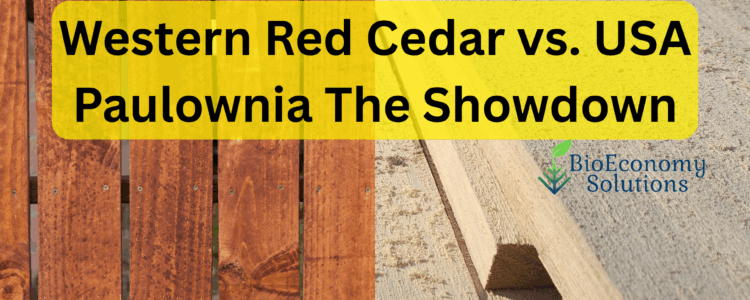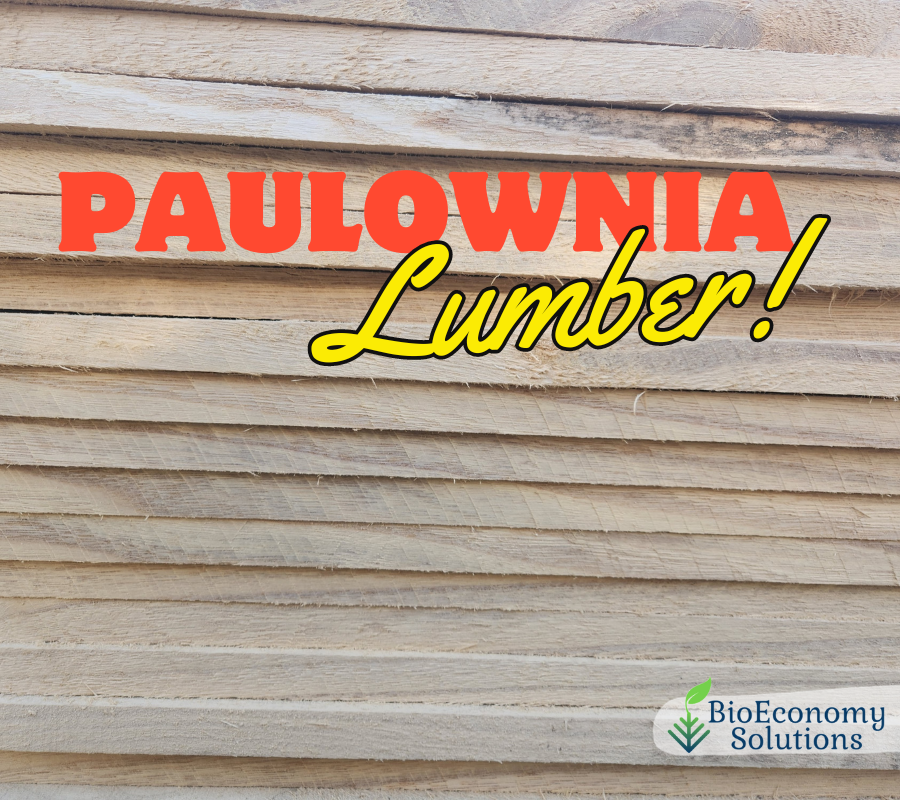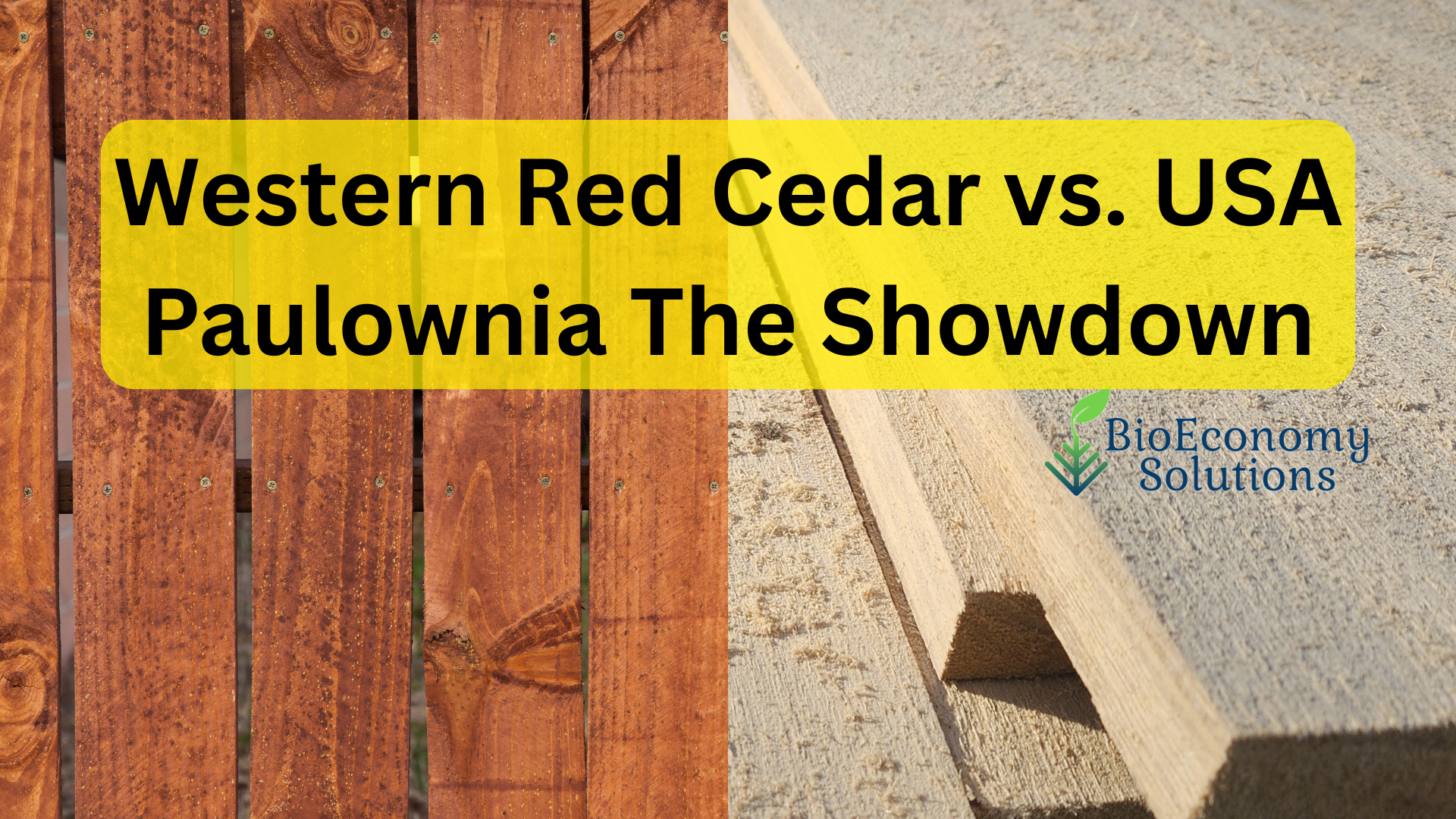
Currently Western Red Cedar is the main stay in many US Industries from housing to boat building. Now the price has risen, and the quality and quantity of cedar material has diminished.
Yes, Paulownia wood is generally considered to be naturally resistant to rot and decay, as well as insects. This is one of its notable properties and makes it suitable for various applications, including some outdoor uses.
Comparison Chart
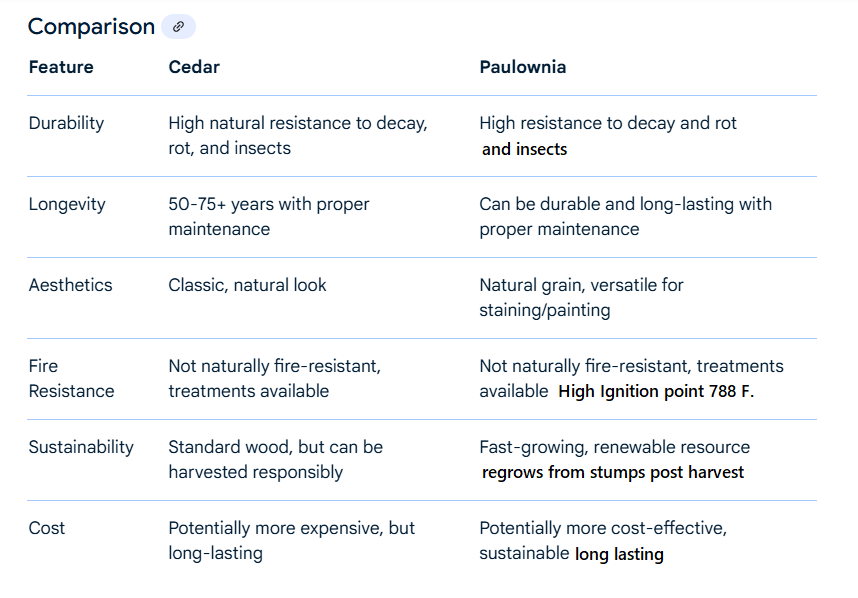
Why Is Paulownia Rot Resistant?
Here’s a breakdown of why:
Tannin content: Paulownia wood contains high levels of tannin, which acts as a natural preservative and helps deter decay.
Cell structure: When dried, the wood cells in Paulownia form a closed structure that provides protection against moisture and decay.
Low moisture absorption:Paulownia has a low moisture absorption rate, which further contributes to its resistance to rot and decay.
Insect resistance: The presence of compounds like paulonin and sesamin in the wood helps to repel insects. Paulonin is a compound found in some types of wood, particularly kiritansu, that provides insect repellent, antibacterial, and preservative properties.
While it has good natural resistance, its important to note that no wood is completely impervious to rot in all conditions. For exterior applications where Paulownia might be in constant contact with the ground or exposed to prolonged moisture, proper treatment and design considerations are still recommended to maximize its longevity.
Western Red Cedar: Can the Paulownia Tree Replace a Classic?
Western red cedar (Thuja plicata) has long been a favorite for outdoor construction, siding, and furniture due to its natural durability and beauty. But with sustainability concerns and rising costs, could paulownia wood—the fast-growing “miracle tree”—be a viable alternative?
Let’s compare these two woods and explore how paulownia might supplant western red cedar in key applications
1. Growth Rate & Sustainability
Western Red Cedar: Slow-growing (takes 50+ years to mature).
Harvesting relies on old-growth forests or managed plantations, raising ecological concerns.
Increasingly expensive due to high demand and limited supply.
Paulownia: One of the fastest-growing hardwoods (harvestable in 5 – 7 years).
Thrives on marginal land, reducing pressure on natural forests.
Carbon sequestration powerhouse—absorbs 10x more CO₂ than cedar over the same period.
Winner? Paulownia is the clear choice for eco-conscious builders who want a renewable, low-impact material.
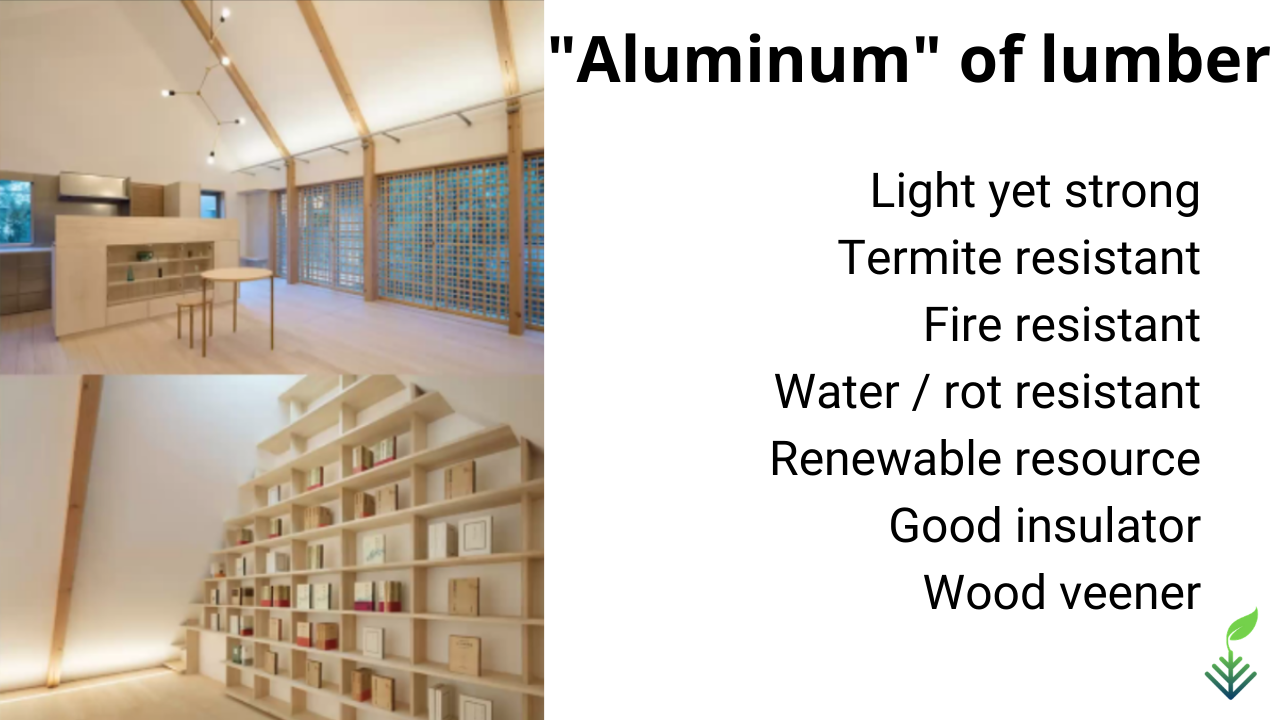
2. Weight & Workability
Western Red Cedar: Lightweight compared to other softwoods, but still denser than paulownia.
Easy to cut and shape but can split if nailed improperly.
Paulownia: Exceptionally lightweight (about 1/3 the weight of cedar).
Softer and easier to mill, carve, and sand—ideal for detailed woodworking.
Less prone to warping or cracking during drying.
Winner? Paulownia is better for crafts, models, and furniture where weight matters.
3. Durability & Weather Resistance
Western Red Cedar: Naturally rot- and insect-resistant due to oils and tannins.
Lasts decades untreated in outdoor applications (siding, decks, fences).
Paulownia: Naturally rot-resistant also and can be further enhanced with sealing or pressure treatment for outdoor use.
Naturally termite resistant if unprotected.
Cedar and paulownia shingle siding both offer natural, durable, and aesthetically pleasing options for home exteriors, but have distinct characteristics. Cedar is known for its natural resistance to decay, rot, and insects, and can last for decades with proper maintenance. Paulownia, while also durable and insect-resistant, is a faster-growing, more sustainable hardwood option.
Cedar Shingle Siding
- Durability:
- Longevity:
- Aesthetics:
- Fire Resistance:
- Maintenance:
- Cost: 16.00 /bf
Paulownia Shingle Siding
- Durability:
- Sustainability:
- Aesthetics:
- Fire Resistance:
- Maintenance:
- Cost: $6.00 /bf
4. Cost & Availability
Western Red Cedar
Prices have surged due to high demand and limited supply.
Premium grades (clear, knot-free) are especially expensive.
Paulownia
More affordable (often 30–50% cheaper than cedar).
Increasingly available from U.S. plantations.
Winner? Paulownia wins for budget-friendly projects.
5. Best Uses for Each Wood
Where Western Red Cedar Still Wins
- Untreated outdoor projects (decking, shingles, fencing).
- Aromatic applications (closets, saunas).
- High-end siding where natural decay resistance is critical.
Where Paulownia Can Replace Cedar
- Indoor furniture (lightweight, easy to carve).
- Surfboards, Boats, Paddleboards musical instruments, and models (similar to balsa but stronger).
- Treated outdoor structures (if sealed properly).
- Sustainable construction (where fast regrowth is a priority).
Is Paulownia the Future?
While western red cedar remains unbeatable for natural outdoor durability, paulownia offers a sustainable, lightweight, and cost-effective alternative for many uses. As treatment methods improve and plantations expand, paulownia could supplant cedar in:
✅ Indoor woodworking
✅ Treated outdoor projects
✅ Eco-conscious construction
For builders and DIYers willing to seal or treat the wood, paulownia is a game-changer—offering the beauty and workability of cedar without the high cost or long wait for harvest.
Would you switch to paulownia? Let us know in the comments!
You can do better, paulownia is used for outdoor siding. James hardee siding uses paulownia.
Paulownia vs. Western Red Cedar: The Ultimate Showdown – Why Paulownia is the Future of Siding and Beyond
Western red cedar (Thuja plicata) has been the gold standard for premium outdoor wood for decades—revered for its natural beauty, durability, and resistance to rot. But in a world demanding faster-growing, more sustainable materials, paulownia is stepping into the spotlight.
Major manufacturers like James Hardie (a global leader in fiber cement siding) are already incorporating paulownia into their products, proving its viability as a high-performance building material. So, can paulownia truly replace western red cedar—not just in niche uses, but in siding, decking, and outdoor construction.
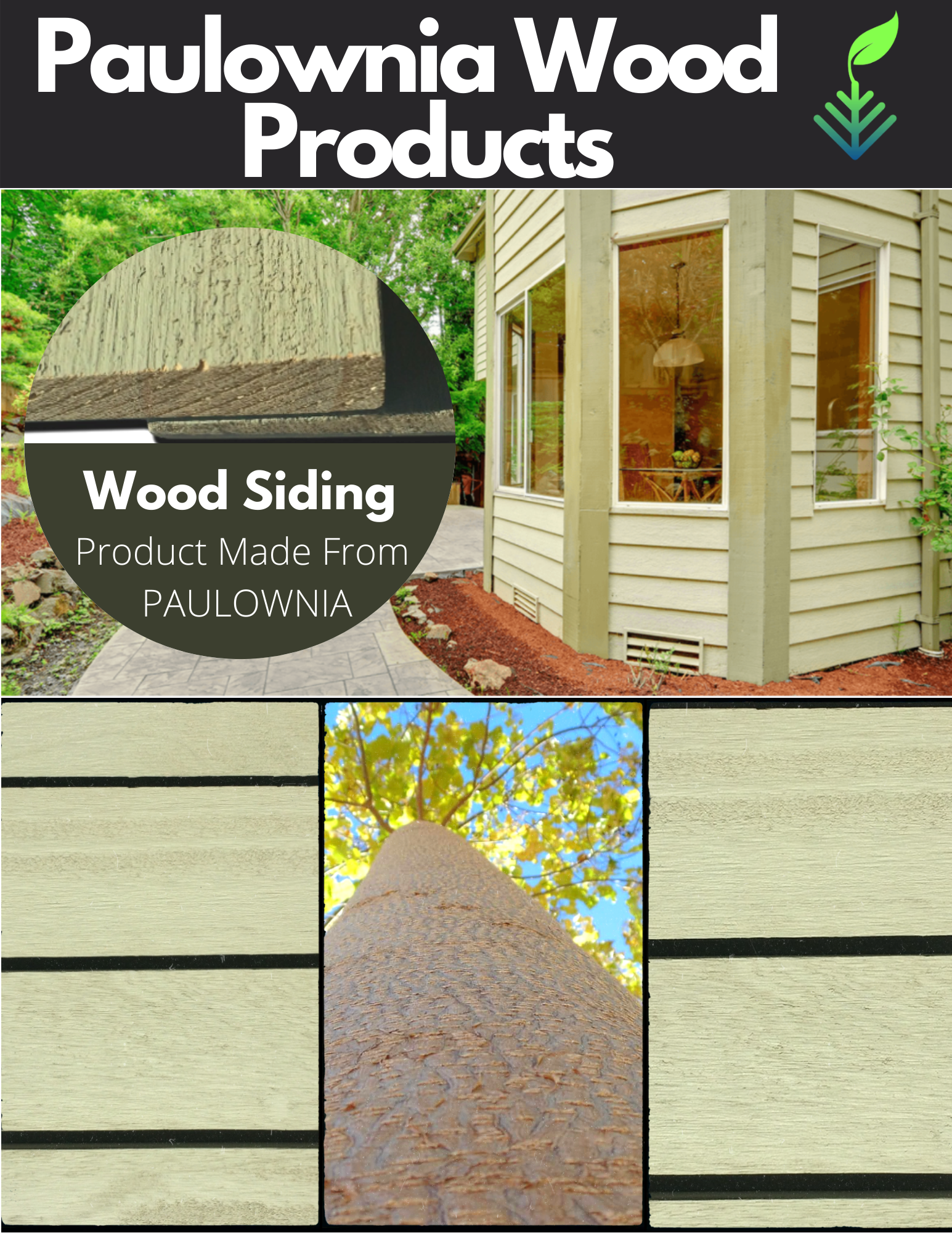
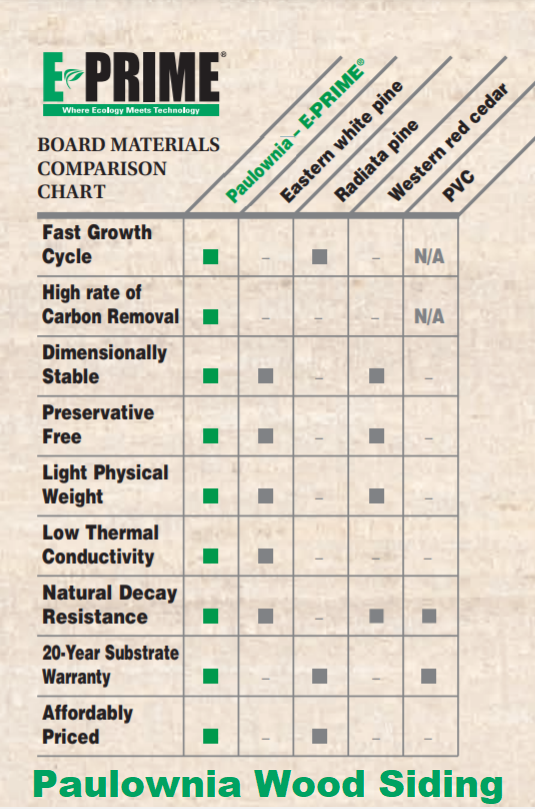
6. Cost & Availability – Paulownia is Disrupting the Market
Western Red Cedar: Prices have doubled in the past decade due to high demand and limited supply.
Premium clear cedar is becoming unaffordable for many builders.
Paulownia: 30–50% less expensive than cedar.
Increasingly available from U.S. plantations, reducing import reliance.
James Hardie’s use of paulownia signals industry confidence in its scalability.
Verdict: Paulownia is the budget-friendly, high-performance alternative.
7. The Future of Siding & Outdoor Construction
Where Cedar: Still Dominates (For Now) Untreated outdoor projects (fences, shingles, garden beds). High-end architectural siding where natural decay resistance is critical.
Where Paulownia is Taking Over: Engineered siding (like James Hardie’s products).
Treated decking and outdoor structures (sealed paulownia lasts as long as cedar).
Sustainable mass timber construction (lightweight, fast-growing).
Indoor furniture, cabinetry, and millwork (easier to work with than cedar).
Final Verdict: Paulownia is the Next Big Thing
Western red cedar isn’t going away—it’s still the best choice for untreated, naturally durable outdoor projects. But with rising costs, environmental concerns, and advanced wood treatments, paulownia is poised to replace cedar in key markets:
✅ Siding (as seen with James Hardie)
✅ Treated outdoor structures (decks, pergolas, fencing)
✅ Eco-conscious construction (carbon-negative, fast-growing)
✅ Lightweight architectural applications
The bottom line? If you’re still using cedar for everything, it’s time to give paulownia a serious look. The future of sustainable building is here.
Would you switch to paulownia for your next project? Let us know in the comments!
Pricing of Both?
Include cost of both lumber prices. Western red cedar is $16.00 /bf and paulownia is $6.00 / bf.
The question isn’t “Is paulownia good enough?” – it’s “Can you afford NOT to use it?”
Where To Purchase USA Paulownia Lumber
Looking for paulownia lumber for your next project? We can ship what you need from our USA saw mill location.
Learn more about our South Carolina paulownia lumber here: https://bioeconomysolutions.com/paulownia-lumber/
We can also ship by rail or shipping container overseas as well.
Call us at 843.305.4777 OR Learn more about our South Carolina paulownia lumber here: https://bioeconomysolutions.com/paulownia-lumber/

